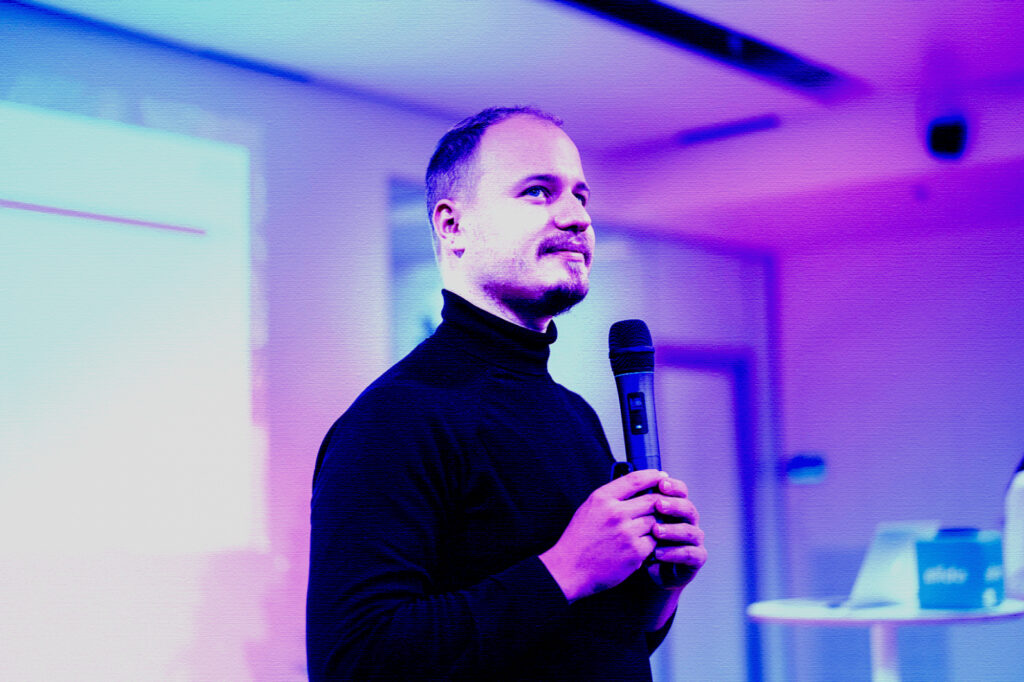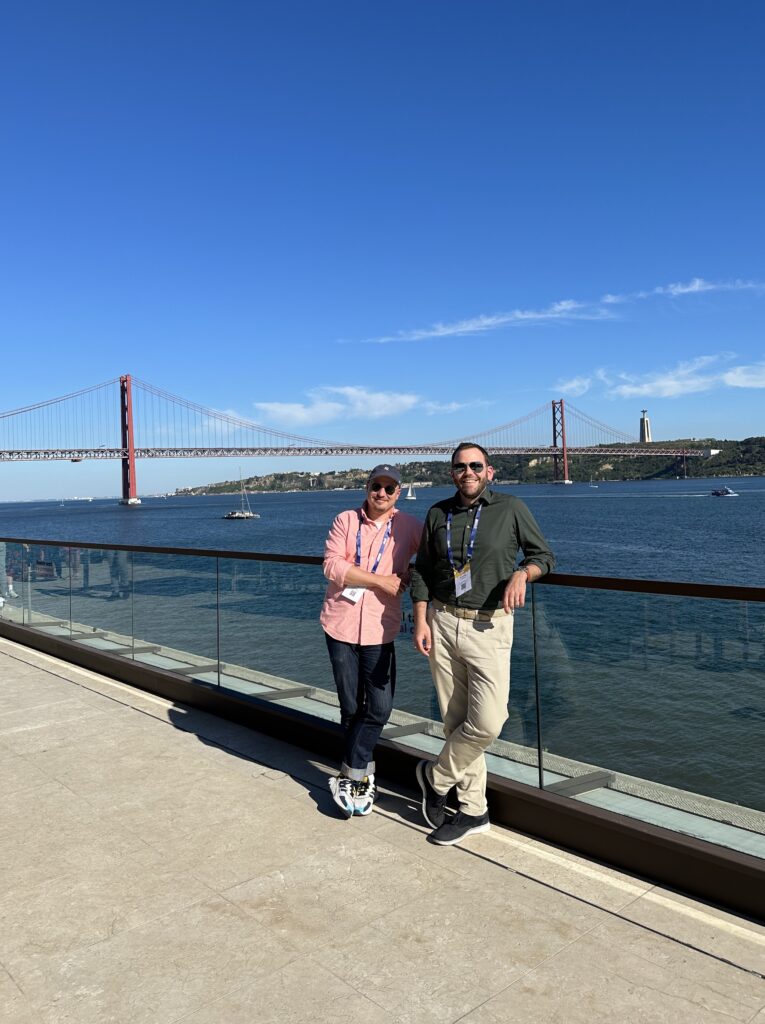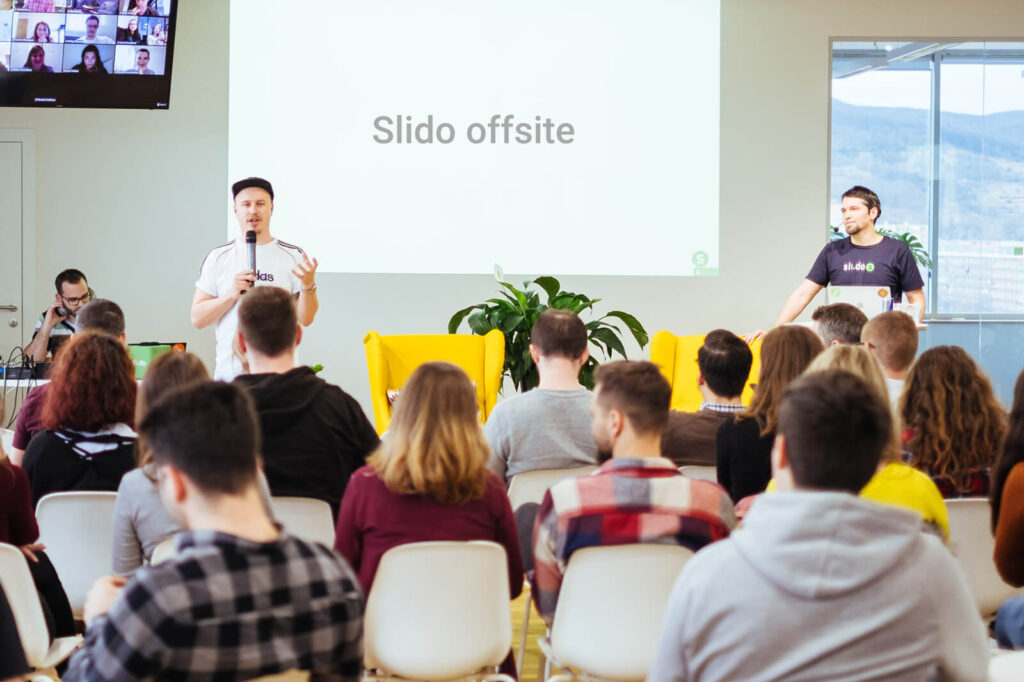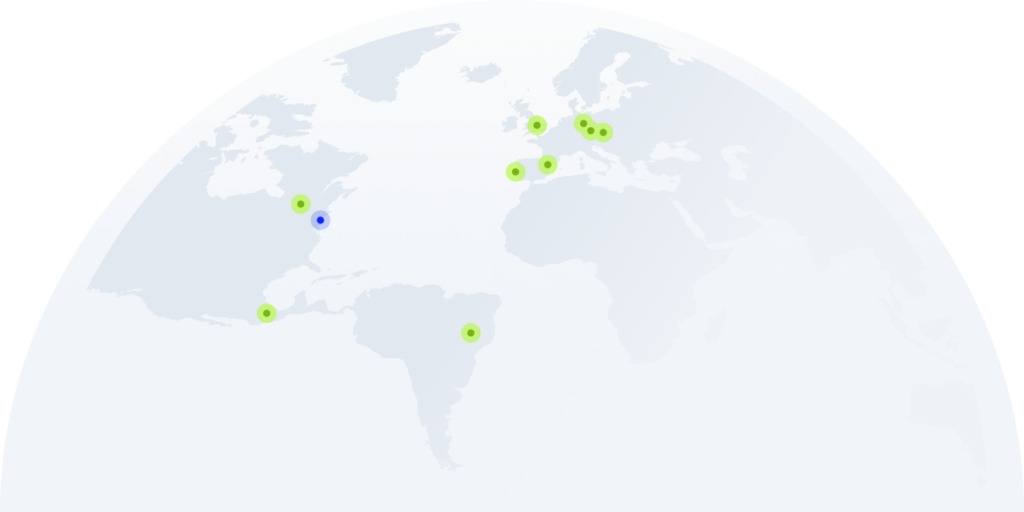cloudTALKS with Juraj Holub: Mastering remote and hybrid meetings

Today’s cloudTALKS features Juraj Holub, co-founder of Remote People and former Chief Meeting Designer at Slido.
Juraj has been a driving force in the world of remote work, helping grow the Slido team from 8 to over 260 people in 26 countries. Together with his partner Andrej Krištúfek, he’s worked with 70% of Fortune 500 companies as well as high level conferences like SXSW, Web Summit, and Adobe Summit.
Much like CloudTalk’s philosophy, Juraj believes the future of work lies in remote and hybrid setups, but it’s essential to have the right tools, meeting culture, and habits in place. Join us as we learn how to nail remote and hybrid meetings, directly from the source.
Juraj’s journey in the world of remote work…
Thank you for joining Juraj. Let’s dive right into your current venture, Remote People. How did the idea for this company come about?
Certainly! I founded Remote People with my friend and former Slido colleague Andrej with several motivations behind it.
First and foremost, we have a deep passion for building something from scratch. That drive was what initially led us to join Slido and thrive in that environment. We are generalists who enjoy being involved in various functions and love the process of creating. After the acquisition by Cisco, we found ourselves soul-searching and wanted to start fresh and build something new out of nothing.
Since we have always been passionate about helping teams improve collaboration and communication, Remote People embodies that commitment. I bring almost a decade of experience and expertise in leadership and soft skills, while Andrej contributes his technical knowledge. We complement each other nicely.

The main challenges in remote and hybrid meetings…
What are the most common reasons customers reach out to you?
Improving meetings is a top priority because they play a significant role in communication and collaboration. Another challenge is information management, as companies struggle to find scattered information across different tools, which hampers productivity and effectiveness.
In the context of remote or hybrid work, asynchronous communication becomes crucial. It requires a culture of documentation, capturing and storing information, and retrieving it effectively when needed.
These are the primary challenges that companies often seek our assistance with. In addition, there are soft aspects to consider, such as deteriorating team cohesion, team spirit, or trust. To address these, we organize off-site sessions aimed at rekindling team spirit and strengthening trust.
When you compare remote and hybrid meetings, what are the differences in terms of challenges and how to overcome them?
Challenges in remote and hybrid setups have slightly different nuances.
In fully remote setups, the biggest challenge is maintaining team cohesion and spirit. While remote work offers flexibility and advantages, the potential for loneliness and isolation is a concern. Companies address this challenge through regular meetups such as retreats and off-sites.

However, as the company size grows, logistics and costs become more complex, requiring strategic planning. Creating rituals and meaningful interactions between meetings is also crucial to sustaining team spirit.
In hybrid work arrangements, the primary challenge is logistics. Balancing in-person and online meetings, determining when and where to meet, and accommodating individuals who cannot be physically present require careful coordination. Managing these logistical aspects can be time-consuming in a hybrid setup.
To overcome these challenges, companies need to focus on strategies that foster team cohesion and trust in remote setups, while aligning vectors and addressing logistics in hybrid setups. It’s important to find a balance between face-to-face interactions and virtual collaboration to ensure effective communication and collaboration within the team.
How can we create an inclusive and engaging environment in hybrid meetings where both remote and on-site participants feel fully involved?
I love this question and it’s something I’m truly passionate about.
When organizing hybrid meetings, it’s crucial to shift our mindset. Instead of approaching them as face-to-face meetings, we should treat them as fully online gatherings. This is necessary because using physical tools like whiteboards excludes online participants from actively participating. While it may seem obvious, many organizers overlook the need to cater to those joining remotely.
We need to flip this thinking and give precedence to the online audience. When seeking opinions or answers, it’s important to approach online participants first, combatting the inherent distance bias prevalent in hybrid meetings.
Essential tools and technologies for success…
In that case, which tools can assist with remote or hybrid meetings?
Let’s start with hybrid meetings. Firstly, you need a reliable video conferencing solution like Microsoft Teams, Google Meet, or any other Zoom alternative. Around, for example, offers excellent integration with whiteboarding solutions which are essential for effective hybrid meetings, enabling brainstorming, workshops, and facilitation. Miro or Mural are also good for these purposes.
Another crucial aspect is polling solutions, so you can gather feedback from both in-person and remote participants. A popular choice is Slido.
Finally, don’t overlook the importance of hardware for hybrid meetings. Sound quality is crucial, so make sure to have a Jabra or an external microphone in the room. A high-quality camera is also essential. I personally love using the Continuity Camera feature in the Mac or Apple ecosystem, which turns your iPhone into a powerful webcam.

People are feeling a little tired of online bingos and similar activities. Do you have any tips for fostering a sense of fun and building remote or hybrid workplace relationships?
Your VP of People, Klaudia, shared on our podcast that she dedicates 10-15 minutes at the start of meetings for chit-chat. As a leader, I also spend time before weekly team meetings connecting with individuals on a personal level. Incorporating these interactions into your workflow shows that you care and makes it feel natural and personal. One-on-ones are crucial, especially in a remote setup where feedback needs to be strategic and deliberate.
For CEOs and leaders in remote or hybrid setups, over-communication is essential. All-hands meetings and Q&A sessions provide opportunities for the team to connect and ask questions. Communication through memos or short video messages from the CEO is also effective.
Talking about the importance of facilitation. How to be a good facilitator?
First of all, I think that facilitation will really be the skill of the future.
You won’t have all the answers, so your role as a facilitator is to extract those answers from your team. This involves fostering effective discussions, asking the right questions, and creating a safe space for people to share their thoughts and insights.
Leaders should aim to talk less and listen more, setting the context and problem definition before stepping back. Allow the department leads or functional experts to take the lead in addressing the problem while you excel in facilitating their collaboration.
Measuring and evaluating productivity and performance…
How can we effectively measure and evaluate the productivity of our meetings and the way we handle them?
Honestly, I think that sometimes we tend to overthink it. A simple feedback form at the end of the meeting works wonders.
I’m not suggesting you do it for every meeting, but for high-stakes meetings like all-hands meetings or project kick-offs, why not have a simple feedback form right at the end? Not through email or Slack, but at that moment.
Additionally, many companies conduct regular employee barometers on a monthly or quarterly basis. At Slido, we experimented with the idea of MBS, Meeting Brilliance Score, inspired by Net Promoter Score (NPS). You can adapt the NPS question to ask, “How likely are you to recommend our company based on the quality of the meetings?” This provides another way to gauge meeting quality.
Staying ahead of the curve…
When it comes to the future, what trends or innovations do you anticipate, and how can organizations stay ahead of the curve?
One thing is certain — the genie is out of the bottle. Companies that attempt to fully revert to their old ways are essentially stepping backward and delaying the inevitable challenge. We are currently in a chaotic stage where experimentation is necessary, particularly within teams.
The future of work will vary across the spectrum, with some fully remote outliers driven by culture, industry, and size.
Most organizations will adopt a hybrid approach, leading to diverse variations. Navigating this journey requires strategic discussions to align the entire organization with its unique needs.
And now, on a more personal note! Is there something about you that people might find interesting? It could be anything!
I have a deep love for adventure cycling. Basically, embarking on long journey trips in the wilderness on a bicycle.

In the past, I have had incredible experiences exploring remote locations alongside my brother, and we were completely self-reliant. For instance, we crossed the Pamir Mountains in Tajikistan and Kyrgyzstan, cycled from north to south in Iceland, and even tackled the Atlas Mountains in Morocco.
These adventures truly make me feel alive, and it is one of my greatest passions.
That sounds amazing! Best of luck not only with Remote People but also with wherever your bicycle takes you next and thank you so much for the interview!
Thank you very much and thank you for having me here.





















